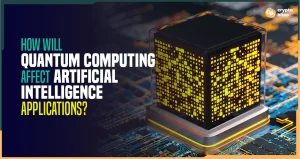
What is Consensus Mechanism in Blockchain?
Blockchain’s status as a shared, decentralized database is cemented by its security features. Its security is kept airtight with something called a consensus mechanism.
Unlike cash money, which is tangible, cryptocurrency’s intangible nature leaves loopholes for double spending if not used carefully.
A consensus mechanism was set up to battle this very issue.
In fact, blockchain’s transaction and record security rely primarily on this mechanism.
Let’s take a close look at what a consensus mechanism is and how it functions within the blockchain.
What Is Consensus Mechanism?
Before we understand what a consensus mechanism is, we need to understand what a blockchain is.
A blockchain is a public, decentralized ledger system.
Which means every time a transaction is recorded in these ledgers, independent verifiers have to verify the transactions using peer-to-peer computers before they can be added to the whole chain.
The different methods that are used to verify a transaction’s validity are known as consensus mechanisms.
It’s a program that is used to achieve widespread agreement about the ledger’s validity and state.
Consensus mechanisms are usually implemented in networks with massive user networks and nodes.
Blockchain, cryptocurrency, and other open ledger systems usually employ this in lieu of human verification.
Mostly because human verification is much more costly and time-consuming in comparison.
Let’s take Bitcoin, for example.
Bitcoin uses a mechanism known as Proof-of-Work (PoW) to verify its transactions.
Computers are used to solve a complex mathematical problem, which is also known as a hash.
The hash is usually solved by a miner or a group of miners.
Bitcoin’s PoW works in a way that requires every node on the network to verify the information that is under the layer of hash.
The computers look at different things, like the structure of the data, the hash of the block header, the time the block was created, the size of the block, and the first transaction.
It fulfills a verification checklist to make sure everything is correct.
As we said before, this process of manually solving the hash, also known as mining, is much quicker than human verification.
History of Consensus Mechanisms
With the soaring popularity of computer networks in the 1980s, shared databases became the norm.
They would allow multiple users to access a database, which was immensely useful for big corporations and data holders.
However, databases were centralized. Even though users could access the data from different locations, a central administration would manage user permissions.
So, if the administration was breached or made a mistake, all the data would be at risk.
Over time, databases turned into a centralized network with the same central administrative verification for maintaining data integrity.
Eventually, distributed ledgers replaced shared databases.
The new ledger system would allow for not only accessing information from various locations but also recording information as well.
Most databases at that time faced two common issues – data tampering and unauthorized access.
A solution to maintain data integrity was needed at the moment, as well as to automate the maintenance of the database.
As a result, distributed autonomous consensus was introduced.
This was a computer program that would automatically use cryptographic techniques to agree on the state of a database.
Initial consensus mechanisms were created using encryption algorithms. These algorithms used unique alphanumeric codes, also known as hashes.
Programs on the networks used hashes to verify information. How?
Whenever input information was changed, the hash changed. Programs would compare hashes to make sure whether the data was tampered with or not.
If hashes matched within most nodes, consensus was reached, and a change would be verified as valid.
The credit for the consensus mechanism goes to Satoshi Nakamoto. His famous whitepaper illustrates that, which played a crucial role in the creation of Bitcoin.
How Does A Consensus Mechanism Work?
Consensus mechanisms work via a basic mechanism known as nodes.
Nodes play a crucial role in processing transactions. How?
They process the information from a transaction that’s waiting to be verified.
Once the nodes have received the data, they cross check it with their own database.
If the information matches, they respond with an approval and send it to the next node. If not, they respond with disapproval.
For example, suppose a user is trying to double spend a coin.
However, since the coins already have the record of being spent in the records of that blockchain, the system would simply reject the transaction.
The rejection is usually confirmed via a system wide majority rejection from a major number of nodes.
Users can be banned from using a platform if they try to bypass this regulation more than once.
However, a node can reject and challenge recorded information. In this case, the node would have to request a recall across the entire network.
If more than two-thirds of the nodes agree with the new information, only then will the system confirm the transaction, share it across the platform, and permanently add it to the blockchain.
Which means, unlike a centralized financing system, where the system is more vulnerable due to its centralized nature, this decentralized blockchain system makes wrongful transactions way more difficult.
The only way that would be possible is if someone controlled more than two-thirds of the nodes, which is virtually impossible.
Types of Consensus Mechanisms
Blockchain platforms have been evolving on the front of transaction agreements.
While there is no one perfect mechanism, different blockchains have employed different mechanisms for Web3 applications.
Here, we’ve listed some of the most prominent consensus mechanisms currently being used.
PROOF OF WORK (POW)
Proof of work is one of the oldest and original methods that many Bitcoin and other blockchains use for their transaction verification.
In PoW, miners compete against each other to complete complex mathematical problems.
The first miner (or group of miners) to solve the problem gets to “create a block” and, therefore, confirm transactions.
As a reward, they get a “block reward.” This reward is usually a specific amount of coins.
However, PoW has been criticized for being environmentally volatile, mostly because it requires a lot of electricity and computing power to simply keep up mining.
The high costs of PoW have become a gatekeeper, as well as creating scalability issues.
To address these concerns, more eco-friendly consensus methods have emerged, such as Proof of Stake (PoS).
PROOF OF STAKE (PoS)
Proof of stake uses a staking system to allow validators (miners) to verify a hash. This is different compared to the competitive mining of PoW.
In PoS, validators pay a down payment of digital currency as a “stake.”
Validators are selected randomly. Those who are selected can validate a block and earn a reward.
If you’re thinking that this is similar to buying lottery tickets, it is.
The more “stakes” (money/digital currency) you put down, the better your chances are of being selected.
A big difference between this and PoW is that validators get a transaction fee as a reward instead of new coins.
Since there are no competitions among validators, PoS requires a lot less processing power.
It’s also noteworthy that PoS provides better protection against 51% attacks.
However, PoS has received backlash for favoring those with higher stakes and creating an unfair selection method.
It gives too much control to a few hands, which goes against the entire philosophy of decentralization.
Ethereum is one of the major PoS platforms that migrated from PoW to PoS in 2022. Some of the other examples include Cardano (ADA), Solana (SOL), and Tezos (XTZ).
DELEGATED PROOF OF STAKE (DPoS)
Delegated proof of stake is a modification of PoS. How?
It’s a system where consensus is reached via a reputation-based electoral method.
Within this system, users of the blockchain choose validators to secure the network on their behalf.
The validators are also known as ‘witnesses’ or ‘block producers.’
People who get the most votes get to become block producers/validators, and validate transactions within the system. They maintain the nodes of the blockchain.
To vote, you have to be an active member of the system and put your tokens into a staking pool.
Your vote weight increases with your token stakes. The more you have, the more important your vote is.
The validators who get selected get a reward. This reward usually trickles down to the users who voted for them.
However, anyone can be replaced as a validator at any given moment.
Validators can be voted out by other members if they don’t do their jobs properly or try to validate a false transaction.
This highly democratic approach to the blockchain creates a more thorough, secure, inclusive, and honest peer-to-peer connection.
Unlike other mechanisms, the verification process is a lot less automated and requires a lot of active users.
This consensus mechanism is less common. Cryptocurrencies that use DPoS include Lisk (LSK), EOS.IO (EOS), Steem (STEEM), BitShares (BTS), and Ark (ARK).
PROOF OF AUTHORITY (PoA)
Proof of activity (PoA) is a hybrid model of consensus.
It uses key characteristics of the PoW and PoS models.
It’s used in a number of blockchain projects, such as Decred (DCR) and Espers (ESP), as well as cryptocurrencies like Xodex, JP Morgan (JPMCoin), and VeChain (VET).
PoA begins with mining, just like PoW.
Miners use heavy computing power to solve complex math problems and find the 64 digit code within the hash, creating the block.
After the mining is completed, PoA behaves like PoS instead.
The block’s header is sent to the PoA network, and a group of validators approve the block by signing off on its hash and verifying it.
Even though validators are chosen in an arbitrary manner, having more stake or crypto means you have a higher chance of being chosen as a validator.
After verification by all the nodes in the system, the block gets added to the blockchain’s permanent record.
Like PoS, rewards (transaction fees) are shared among validators and miners alike.
PoA blends the strengths of both PoW and PoS. However, it suffers from the same problems as its root models.
As a result, it is not as widely implemented.
Final Words
The necessity of consensus mechanisms is paramount, as their weakness can create loopholes within the blockchain, making the system vulnerable.
Which is why quality mechanism protocols should always be implemented to maintain the integrity of the system. Until a better alternative comes along, consensus mechanisms are the pillars of security within blockchain networks and cryptocurrency.




